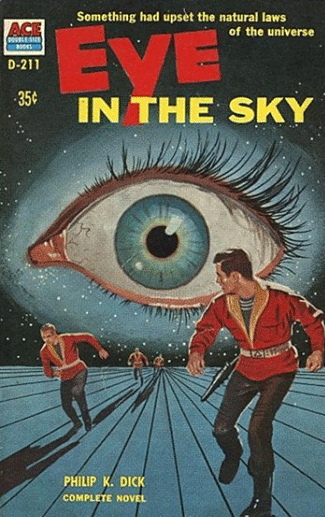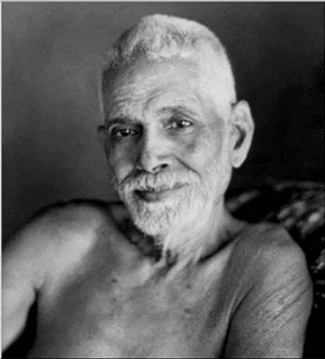by Charles Carreon
February, 2004
Hell is a popular feature of religions that we are familiar with. Check this literally hair-raising evocation ripped from today's fervent evangelical webpages:
Christian Evangelical wrote:
What you're about to read is hard to believe. . .
We're going to examine the place the Bible calls hell. We'll present documented evidence for a place called hell. Don't take what you're going to read lightly. If what you read is true — YOU COULD BE IN SERIOUS DANGER!
Several years ago a book was published, entitled Beyond Death's Door by Dr. Maurice Rawlings. Dr. Rawlings, a specialist in Internal Medicine and Cardiovascular Disease, resuscitated many people who had been clinically dead. Dr. Rawlings, a devout atheist, "considered all religion "hocus-pocus" and death nothing more than a painless extinction". But something happened in 1977 that brought a dramatic change in the life of Dr. Rawlings! He was resuscitating a man, terrified and screaming — descending down into the flames of hell:
"Each time he regained heartbeat and respiration, the patient screamed, "I am in hell!" He was terrified and pleaded with me to help him. I was scared to death. . . Then I noticed a genuinely alarmed look on his face. He had a terrified look worse than the expression seen in death! This patient had a grotesque grimace expressing sheer horror! His pupils were dilated, and he was perspiring and trembling — he looked as if his hair was "on end."
Then still another strange thing happened. He said, "Don't you understand? I am in hell. . . Don't let me go back to hell!" . . .the man was serious, and it finally occurred to me that he was indeed in trouble. He was in a panic like I had never seen before."
(Maurice Rawlings, Beyond Death's Door, (Thomas Nelson Inc., 1979) p. 3).
Dr. Rawlings said, no one, who could have heard his screams and saw the look of terror on his face could doubt for a single minute that he was actually in a place called hell!
The folks who run this website seem to think that hell is inside the earth. I'm sure a lot of people who've had a bad acid trip remember being sealed inside one of these setups.

But not to be to blithe about it -- people take these "returned from near-death" stories as valid evidence of the nature of the hereafter. These stories use the powerful effect of direct testimony ("I was there, I saw it") from a presumably credible witness, standing at the right position ("death's door") to get a glimpse of what lies in store in that land from which none return. Plus, the story allows you to enjoy a sadistic kick -- always a plus with hell stories. You're imagining this poor bastard suffering terrible fear. He has glimpsed a new, terrifying world, more real than the world where he's lived his whole life, and he knows that, if he loses his grip on the world of the living, he will slide into endless torment more horrifying than anything he ever imagined could exist. Now that's scary. Makes you feel more comfortable in your living room. It happened to him, not you! Good show!
For these reasons, the "died and came back to tell you about it" story is popular with hellfire preachers of all denominations. The Tibetan Buddhists are notably participators in this mode of preachment. They have a special name for the people who die and return to tell of their travels -- "Delok." Here's a website with a number of Delok stories -- http://www.lib.virginia.edu/speccol/exh ... urned.html
These stories were probably some of the most entertaining Tibetan tales available, almost having the appeal of tabloid journalism when compare with the lengthy lists of hells laid out by Patrul Rinpoche:
First off, if hell is a planet, its rotation is very slow, because one day in hell equals five hundred earth-days.
"AGAIN LIFE" -- Fight, die, be reborn. Repeat daily for 100 hell years (50,000 earth years).
"BLACK LINE" -- Get burned with coals, then sliced up along those burn lines. Remain here 1,000 years of hell years (500,000 years).
"SMASHED" -- Get ground between blazing mountains for 2,000 years (1,000,000 years).
"CRYING AND SCREAMING" -- Enter house, get locked inside. House gets red hot and you remain in house for 4,000 years (2,000,000 years).
"GREAT CRYING AND SCREAMING" -- Start out locked inside burning house. Get out, discover you are in bigger burning house that is actually hotter than the first one that you can't get back into. Lots of screaming and noise. Remain 8,000 years (4,000,000 years).
"HOT" -- Get thrown in a pot and boiled. When you boil to the top, demons bang you on the head with blazing hammers. This sometimes knocks you out, which provides some slight relief. Boil furiously for 16,000 hell years (8,000,000 years).
"VERY HOT" -- Get impaled with a redhot pitchfork, then wrapped in blazing hot metal. Remain half an eon (Real Long Time).
"WORST" -- Maximum agony setup -- sixteen houses, one inside the other, each one hotter than the next, with a bellows that generates constant blowtorch temperatures that melt all bodily forms into molten agony. The only thought that exists for a full eon is that someday it will end.
Wow, that stuff is scary. Of course, there is no particular reason for it to be true. Despite the occasional story on the website, we really don't know of anybody who can validate the idea that there really exists any type of system for dispensing inter-galactic-trans-temporal, all-encompassing justice. And if such a system existed, why would it set up elaborate systems of pain delivery unrelated to any survival purpose?
In case you wondered, the Tibetans don't put hell in the "middle" of the earth, because their earth doesn't have a middle. Their earth is flat, like the rest of the universe. Hell is way way down below the earth, seven levels down. Heaven is way way up above the earth. There are lots of heavens up there, each one more rarefied than the next and at the very top is Akanishtha, the heaven of the highest Buddhas. There are no whirlpool galaxies, quasars, black holes, white dwarfs, or any such heavenly bodies in this Tibetan geography. This geography is believed to be just as accurate as the description of the hells and all other features of the afterlife.
These stories were created by people. Tibetans had visions of a vast trans-temporal karmic bureaucracy meting out harsh punishments on those who failed to honor the Lamas and the Dharma. Christians saw a similarly fearsome Jehovah casting unbelievers into everlasting damnation. Everyone who has a hell has enemies to put into it. It's like having a garbage can in your house. You put things into hell when you need to get rid of them. Nobody can pull anything out of hell, anymore than you should take things out of the garbage. It's the ultimate in social rejection. You get sent to hell. You get excommunicated. They tear up your hall pass. You get sent to the principal. They put a black mark on your permanent record. You fail. Everyone will know.
In a closed society of serfs, nobles and clergy, stories like this are useful. Especially if the nobles and clergy stick together to keep the serfs illiterate, poor, and fearful, the two privileged types each man their own turf and bully the poor in turn. The nobles use force and poverty to control the serfs in this life. The clergy fill their afterlife with fears of retribution, urging them to hold back their anger against the wealthy. For should that anger get the better of them, prompting them to demand social change, or entertain the notion of revolt, it will lead to lower rebirths, more of the same. Better to eat crow, pay taxes, make offerings, pray for a better rebirth. Then you will be a rich noble instead of a serf. Or maybe you will even be a lama.
For the serf, there is no question of whether such places really exist. They have no standard by which to judge. All of the knowledge they possess is counterfeit. They have no accurate image of the shape of the earth, the location of the moon or the sun, the height of the mountains. They do not understand that the earth is a sphere, that raindrops are too, that the sky goes all around us, not just straight up, that the earth is not flat, and hell is not underneath it. We have looked there. Underneath Tibet is Arizona, but that's only close to hell.



